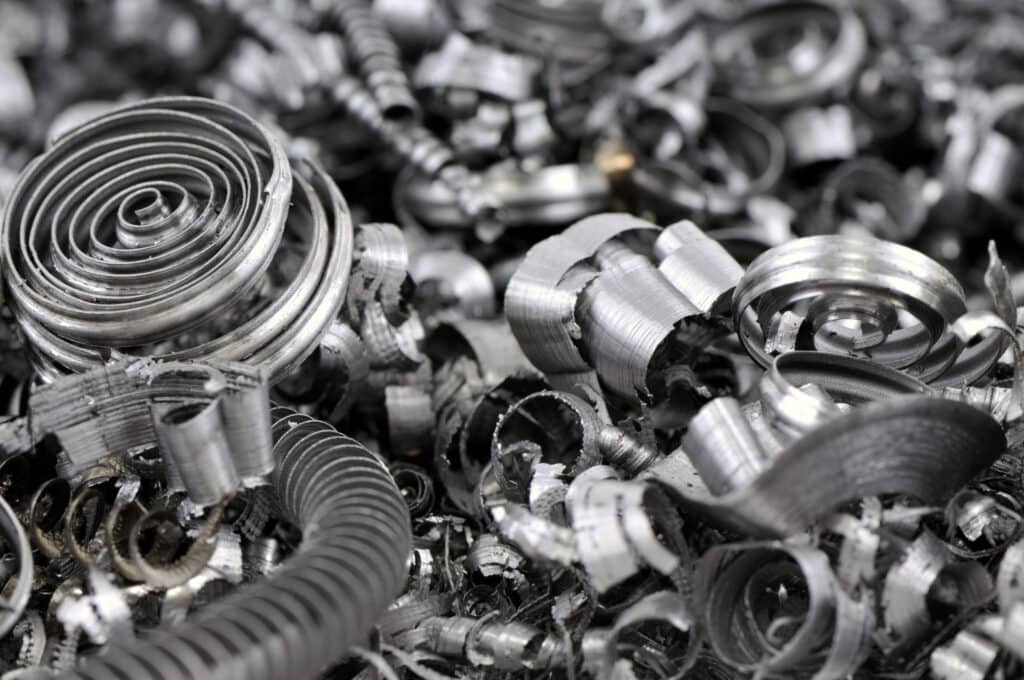Many manufacturing operations and machine shops consider excess metal scrap as part of the cost of doing business. As a result, many manufacturers fail to implement planning and process improvements that can minimize the amount of scrap they generate during production. While scrap can be recycled to recoup some financial loss, minimizing scrap generation has a much more positive impact on an operation’s bottom line.
Scrap rates can actually be used as a valuable data tool. Measuring the amount of scrap generated by a process in the form of discarded materials and reworks will help to benchmark the effectiveness of the production process. While some scrap is natural to any manufacturing operation, streamlining the processes that generate the most scrap will ultimately lower the overall cost of production. The goal should be to minimize both as early in the manufacturing process as possible.
Why is Reducing Your Metal Scrap Important?
Some degree of scrap and rework will inevitably occur in virtually all manufacturing processes, no matter the industry or product. The causes for scrap generation may include:
- Order mistakes
- Poor quality raw materials
- Errors in communication
- Implementation of design changes
- Inefficient procedures
- Machinery or operational issues
- Failure to properly execute the approved design
Regardless of the reason, the ultimate result is wasted time and money. Inefficiencies that generate scrap and reworks are at the core of many continuous improvement efforts. In Lean manufacturing, the scrap production always represents an opportunity for scrap minimization. Focus areas like product documentation, process optimization, and communication of manufacturing and engineering changes can go a long way toward minimizing waste and increasing profits.
How To Avoid Scrap Generation
Though it may be impossible to completely eliminate scrap or rework in custom metal stamping or laser cutting, it can be minimized through continuous improvement efforts.
Reduce the Chances of Human Error
Unfortunately, humans are fallible. Fatigue, unclear communication, misunderstandings, and accidents can all occur anywhere in the supply chain. Any time you can automate material handling processes to minimize physical contact, you reduce the chances of human error.
More comprehensive training is another strategy for minimizing scrap generated by human error. Well-trained and experienced employees understand the procedures, software, and machinery, which translates to fewer mistakes. Fewer operator errors result in less waste.
Streamline Processes
To fully minimize scrap and waste, processes must be streamlined from end to end, beginning with the initial sales contact through the final delivery of the order. Mistakes or inefficiencies at any phase can result in unnecessary waste. Here are some examples of ways to address waste generation in varying processes:
- Address inconsistencies and inefficiencies in sales and customer service practices to avoid unnecessary order changes that may impact production.
- Implement simulation software to minimize the number of prototypes.
- Use design practices like nesting or offal dies to reuse or reduce scrap.
- Conduct a comprehensive inspection of the production line to replace worn or damaged tools.
- Robust process control measures for identifying the causes of defects, ensuring adherence to design specifications, and measuring the consistency and stability of the output.
Have a Reuse or Recycle Plan in Place
Accepting that some scrap is unavoidable means having a plan for how to manage it. Adopting practices to stitch or fasten scrap together for reuse is one way to recycle internally before defaulting to external recycling programs.
Use Efficient Product Design
Planning for the most efficient use of material during the design phase is a strategy that cuts initial material costs and reduces the amount of scrap generation. Reconfiguring the layout can minimize the amount of raw material needed. Some examples of material content reduction include:
- Orienting the pieces closer together
- Fitting pieces together like a puzzle rather than in strips
- Using the same sheet layout for similar parts with different dimensions
Choosing an Optimal Metal Stamper with AIC
At American Industrial Company (AIC), our customers depend on us for a full range manufacturing services, including comprehensive metal stamping and precision laser cutting. Our metal fabrication and precision laser cutting services incorporate the latest technology and techniques, such as CNC laser cutting and melt and blow.
Our metal stamping machines produce a variety of hand and power tools for a wide range of applications and industries, including automotive, aerospace, construction, mining, and many more. We offer a full range manufacturing, custom laser cutting, and metal stamping services from our ISO 9001:2015-certified facility, and our strict dedication to quality assurance ensures that our customers always receive the highest quality products.
At American Industrial Company, we implement the latest technology and Lean manufacturing procedures to eliminate avoidable waste. In optimizing our production techniques to reduce waste, we provide higher quality and more cost-effective services thanks to our reduced material and rework costs. To see how AIC can help with your project, please contact us today




